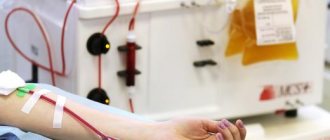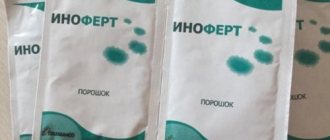Photo source freepik
Physiotherapy is a therapeutic method of maintaining the health of the body.
It was developed around the 18th century, but received its name later.
Everything a physiotherapist does involves the use of auxiliary means, for example, mineral water, therapeutic mud, mineral solutions. In addition to these methods, hardware physiotherapy and non-traditional techniques, for example, acupuncture, are actively developing.
Physiotherapist - who is this?
A physical therapist is a doctor who keeps people of all ages healthy and active.
. In his work, he actively uses physical exercises, massage, as well as special devices that, using ultrasound or temperature, can speed up treatment and rehabilitation.
Physiotherapy is used to treat:
- skin diseases;
- diseases of the spine and joints;
- respiratory tract diseases;
- inflammatory diseases;
- diseases of the digestive system;
- pathologies of the nervous system;
- pathologies of the genitourinary system.
Physiotherapy is a complex of many techniques:
- oxygen therapy;
- thermotherapy;
- light therapy;
- sonotherapy;
- mud therapy;
- hydrotherapy;
- massage;
- exercise therapy;
- ultrasound;
- a magnetic field.
Photo source javi_indy/freepik
The physiotherapist does not conduct diagnostics on his own; other doctors prescribe it to the patient.
The specialist cooperates with almost all doctors:
- neurologist;
- pediatrician;
- surgeon;
- dermatologist;
- sex therapist;
- pulmonologist;
- gynecologist.
The profession is divided into two key areas:
- physical therapist;
- physiotherapist-rehabilitation specialist.
The first deals with cases where a minor health improvement is required. The second is a specialist who helps restore the body after serious health problems.
Benefits of Physiotherapy
Physiotherapeutic methods of treatment have a number of advantages over other methods of treating diseases:
- any type of exposure does not damage the patient’s body tissues;
- physiotherapy enhances the effect of medications, up to their withdrawal;
- no side effects;
- the likelihood of developing drug dependence and withdrawal effects is excluded.
Thanks to the competent actions of highly qualified physiotherapists at the Yusupov Hospital, maximum results in the treatment of diseases are achieved and the likelihood of side effects is minimized.
Training to become a physiotherapist
You can master a profession at a medical school by enrolling in one of the specialties:
- "Healing."
- "Pediatrics".
After six years of full-time study, the young doctor will begin residency. Then, after two years of study in physiotherapy, the doctor becomes a qualified physiotherapist.
And there are also retraining courses for physiotherapists that will help you master a new specialty in a short time. Upon completion of training, a standard document is issued.
Features of the profession
The specialist must know everything about the therapeutic effects and the use of various physical factors on the body. Although he does not make diagnoses or diagnose diseases, he can accurately determine whether the patient needs physical therapy or not, how many procedures will be required, and whether there are contraindications.
It is the physiotherapist who develops the physiotherapeutic treatment program, decides which methods to use, identifies areas of influence and the sensitivity of tissues to physical factors. He collaborates with other highly specialized specialists: pulmonologists, infectious disease specialists, orthopedic traumatologists, vertebrologists, gynecologists, and dermatologists.
He masters all modern rehabilitation measures based on external influences on the human body. This:
- laser therapy;
- magnetic therapy;
- ultrasound;
- UHF therapy;
- iontophoresis;
- Ural Federal District;
- infrared irradiation;
- acupuncture;
- electrophoresis;
- thermotherapy;
- diadynamic currents;
- manual therapy;
- massage
- physiotherapy;
- mud and hydrotherapy.
In addition to receiving and treating patients, the doctor coordinates the work of nursing staff in the physiotherapy department.
Personal qualities of a physiotherapist
A professional physiotherapist is someone who has the following qualities:
- interest in medicine and technology;
- erudition;
- curiosity;
- responsibility;
- good memory;
- ability to analyze large volumes of information;
- ability to find a common language with patients.
Photo source freepik
Pros and cons of the profession
In many countries around the world, a physiotherapist is one of the most sought-after specialists. The popularity of the doctor in Russia is also rapidly increasing.
Advantages of the profession:
- comfortable workplace;
- low degree of responsibility;
- absence of harmful effects, stress.
The profession of any medical worker also has negative sides.
Flaws:
- lack of development prospects;
- low-prestige profession;
- low wages.
At the Academy of Professional Standards, you can undergo professional retraining and master the profession of a physiotherapist as a second specialty, thereby increasing your income level and expanding the scope of your professional interests.
I. General provisions
1. A person with a higher education - a specialty in the specialty "General Medicine" or "Pediatrics" and residency training in the specialty "Physiotherapy" or "Physical and Rehabilitation Medicine" or a higher education - a specialty in the specialty "General Medicine" - is appointed to the position of a physiotherapist. business" or "Pediatrics", training in internship and (or) residency in one of the specialties: "Aviation and space medicine", "Obstetrics and gynecology", "Anesthesiology-reanimatology", "Diving medicine", "Hematology", "Geriatrics" ", "Dermatovenerology", "Pediatric Cardiology", "Pediatric Oncology", "Pediatric Urology-Andrology", "Pediatric Surgery", "Pediatric Endocrinology", "Gastroenterology", "Infectious Diseases", "Cardiology", "Coloproctology", “Therapeutic exercise and sports medicine”, “Manual therapy”, “Nephrology”, “Neurology”, “Neonatology”, “Neurosurgery”, “General medical practice (family medicine)”, “Oncology”, “Orthodontics”, “Otorhinolaryngology” , “Ophthalmology”, “Pediatrics”, “Plastic surgery”, “Occupational pathology”, “Psychiatry”, “Pulmonology”, “Rheumatology”, “X-ray endovascular diagnosis and treatment”, “Reflexotherapy”, “Cardiovascular surgery”, “Emergency medical care", "General Dentistry", "Surgical Dentistry", "Therapeutic Dentistry", "Children's Dentistry", "Orthopedic Dentistry", "Thoracic Surgery", "Therapy", "Traumatology and Orthopedics", "Urology", " Phthisiology”, “Surgery”, “Maxillofacial Surgery”, “Endocrinology” and additional professional education under the professional retraining program in the specialty “Physiotherapy”.
2. There are no requirements for practical work experience.
3. Additional requirements for permission to work:
— certificate of a specialist in the specialty “Physiotherapy” and (or) certificate of accreditation of a specialist in the specialty “Physiotherapy”;
— undergoing mandatory preliminary (upon employment) and periodic medical examinations (examinations), as well as extraordinary medical examinations (examinations) in the manner established by the legislation of the Russian Federation;
— no restrictions on engaging in professional activities established by the legislation of the Russian Federation.
4. Appointment to the position of a physiotherapist, as well as dismissal from it, is made by order of the head of the organization.
5. A physiotherapist must know:
5.1. The main clinical manifestations of diseases and (or) conditions of the nervous, immune, cardiovascular, respiratory, digestive, genitourinary and blood systems, leading to severe complications and (or) life-threatening, determination of patient management tactics in order to prevent them
5.2. The procedure for organizing medical rehabilitation, procedures for providing medical care, clinical recommendations (treatment protocols) on the provision of medical care for medical rehabilitation
5.3. Standards of primary specialized health care, specialized, including high-tech, medical care for diseases and (or) conditions for which the patient is referred to physiotherapy
5.4. Methodology for collecting complaints and life history from patients (their legal representatives) with diseases and (or) conditions
5.5. Methodology for examining patients with diseases and (or) conditions
5.6. Theoretical and practical foundations of physiotherapy and balneology
5.7. Mechanisms of physiological and therapeutic action, aftereffects of physiotherapeutic factors in various diseases, conditions in different age groups, with various concomitant diseases
5.8. Combined mechanisms of action of several physiotherapeutic factors used simultaneously or with an interval of less than a day
5.9. Complex mechanisms of action of several treatment methods and physiotherapeutic factors used simultaneously or with an interval of less than a day
5.10. Indications and contraindications for the use of physiotherapy methods for patients with diseases and conditions
5.11. Methods of conducting physiotherapeutic interventions for patients with diseases and conditions
5.12. Algorithm for drawing up an individual plan for the use of physiotherapy for diagnostic purposes
5.13. Pharmacokinetics, pharmacodynamics of drugs used in physiotherapy, indications, contraindications, dosage regimen taking into account the patient’s age, body weight, liver, kidney and other organ function, interaction with other drugs, features of the use of drugs in pregnant and lactating women
5.14. Clinical signs of favorable and unfavorable course of the pathological process for which physiotherapy is performed
5.15. Symptoms and syndromes of complications, side effects, undesirable reactions, including serious and unexpected ones, resulting from physiotherapeutic procedures in patients with diseases and (or) conditions
5.16. Diseases or conditions that require emergency care for patients with disorders of the functions and structures of the human body and subsequent limitations in life activity
5.17. Modern methods of physiotherapy (electrical, magnetic, light, mechanical, hydro, thermotherapy) and sanatorium treatment (climatotherapy, balneotherapy, peloid therapy) for various diseases or conditions, taking into account the characteristics of age
5.18. The mechanism of influence of physiotherapy methods on the body of patients with diseases and (or) conditions, including at different age periods
5.19. Methods of spa treatment; climatotherapy; balneotherapy; peloidotherapy; types of resorts, classification of resort factors; indications and contraindications; medical indications and contraindications for referral to sanatorium-resort treatment
5.20. Principles of potentiation, cumulation and extinction of the effect of the used methods of physiotherapy, principles of safety of medical interventions in the process of medical rehabilitation.
5.21. Methods for preventing or eliminating complications, side effects, undesirable reactions, including serious and unexpected ones, that arose during the examination or treatment of patients with diseases and (or) conditions
5.22. Instructions for labor protection of personnel of departments and physiotherapy rooms
5.23. Age-related features of physiotherapy
5.24. Medicines and medical devices used in physiotherapy
5.25. Medical indications for referring patients with diseases and (or) conditions to specialists of multidisciplinary teams to prescribe measures for medical rehabilitation, including when implementing an individual rehabilitation program or habilitation for people with disabilities
5.26. Methods for preventing or eliminating complications, side effects, undesirable reactions, including serious and unexpected ones, resulting from the use of physiotherapy for diseases and (or) conditions
5.27. Rules for the preparation of medical documentation in medical organizations using physiotherapy, including in electronic form
5.28. Rules for working in medical information systems and the Internet information and telecommunications network
5.29. Job responsibilities of medical workers in medical organizations providing medical care in the field of “physiotherapy”
5.30. Regulatory legal acts and other documents regulating the procedures for medical examination and follow-up of patients with diseases and (or) conditions
5.31. Medical indications and medical contraindications for the use of methods for the prevention of diseases and (or) conditions in accordance with the current procedures for the provision of medical care, clinical recommendations (treatment protocols) for the provision of medical care, taking into account the standards of medical care
5.32. Principles and features of health-improving activities among patients with chronic diseases and (or) conditions
5.33. Forms and methods of sanitary educational work to develop elements of a healthy lifestyle, including programs to reduce alcohol and tobacco consumption, prevent and combat non-medical use of narcotic drugs and psychotropic substances
5.34. Forms and methods of sanitary educational work among patients (their legal representatives), medical workers on the prevention of diseases and (or) conditions
5.35. Basics of a healthy lifestyle, methods of its formation
5.36. Principles and features of preventing the occurrence and progression of diseases and (or) conditions
5.37. _____________________________________________________________________
6. The physiotherapist reports directly to __________________________.
7. During the absence of a physiotherapist (vacation, illness, etc.), his duties are performed by a person appointed in the prescribed manner. This person acquires the corresponding rights and is responsible for their proper execution.
8. The physiotherapist must comply with:
- medical confidentiality, doctor’s oath;
— principles of medical ethics and deontology in working with patients, their legal representatives and colleagues;
— legislation of the Russian Federation in the field of health care, regulations and other documents regulating the activities of medical organizations and medical workers;
— programs of state guarantees for the provision of free medical care to citizens.
9. ________________________________________________________________
Who chooses and makes recommendations about the need to prescribe procedures?
- Pediatrician;
- A narrow specialist who diagnosed a certain deviation.
The physiotherapist directly selects the optimal course of treatment, makes appropriate prescriptions and carries out procedures.
Initially, the list of responsibilities of this specialist included exclusively the restoration of musculoskeletal function, but over time the list expanded. Today, a physiotherapist provides consultations, is responsible for carrying out procedures, and prescribes massage for a restorative effect. At the same time, the physiotherapist must be a good psychologist to help the child overcome the fear of doctors and everything new, and help him relax during the procedure.
Treatment methods
Best materials of the month
- Coronaviruses: SARS-CoV-2 (COVID-19)
- Antibiotics for the prevention and treatment of COVID-19: how effective are they?
- The most common "office" diseases
- Does vodka kill coronavirus?
- How to stay alive on our roads?
Basically, in daily practice, such a specialist uses a standard list of therapy. It includes therapy with current, ultrasound, cold and heat stimuli, physical therapy exercises and manual influence techniques.
In addition, complex therapy sometimes requires a change in diet, even lifestyle.
IV. Responsibility
The physiotherapist is responsible for:
1. For improper performance or failure to fulfill one’s job duties provided for in this job description - within the limits determined by the current labor legislation of the Russian Federation.
2. For offenses committed in the course of carrying out their activities - within the limits determined by the current administrative, criminal and civil legislation of the Russian Federation.
3. For causing material damage - within the limits determined by the current labor and civil legislation of the Russian Federation.
4. ____________________________________________________________________
This job description has been developed in accordance with the provisions (requirements) of the Labor Code of the Russian Federation dated December 30, 2001 No. 197 FZ (Labor Code of the Russian Federation) (with amendments and additions), the professional standard “Medical Rehabilitation Specialist” approved by order of the Ministry of Labor and Social Protection Russian Federation dated September 3, 2021 No. 572n and other legal acts regulating labor relations.
II. Job responsibilities
The responsibilities of a physical therapist include:
1. Examination of patients with diseases and (or) conditions for the purpose of prescribing physiotherapy:
— Collection of complaints, physiotherapeutic history and medical history from patients (their legal representatives)
— Referral of patients with diseases and (or) conditions for instrumental examination in accordance with the current procedures for the provision of medical care, clinical recommendations (treatment protocols) on the provision of medical care, taking into account the standards of medical care
— Referral of patients with diseases and (or) conditions for laboratory examination in accordance with the current procedures for the provision of medical care, clinical recommendations (treatment protocols) for the provision of medical care, taking into account the standards of medical care
— Referring patients with diseases and (or) conditions for consultation with medical specialists in accordance with the current procedures for the provision of medical care, clinical recommendations (treatment protocols) for the provision of medical care, taking into account the standards of medical care
— Monitoring compliance with safety requirements during physiobalneoprocedures
— Assessing the effectiveness and safety of physiotherapy for patients with disorders of the functions and structures of the human body and subsequent limitations in life activity
2. Prescribing physiotherapy to patients with diseases and (or) conditions:
— Development of a plan for the use of physical therapy for diseases and (or) conditions
— Prescribing physical therapy to patients with diseases and (or) conditions in accordance with the current procedures for the provision of medical care, clinical recommendations (treatment protocols) for the provision of medical care for medical rehabilitation, taking into account the standards of medical care
— Assessing the effectiveness and safety of physiotherapy in patients with diseases and (or) conditions
— Prevention or treatment of complications, side effects, undesirable reactions, including serious and unexpected ones, resulting from diagnostic or therapeutic procedures, the use of physiotherapy
— Providing emergency medical care to patients with diseases and (or) conditions, including those accompanied by persistent dysfunction
3. Conducting and monitoring the effectiveness and safety of the use of physiotherapy for diseases and (or) conditions, including the implementation of individual rehabilitation or habilitation programs for people with disabilities:
— Drawing up an action plan for physical therapy for diseases and (or) conditions in accordance with the current procedures for the provision of medical care, clinical recommendations (treatment protocols) for the provision of medical care, taking into account the standards of medical care
— Carrying out physical therapy measures for diseases and (or) conditions, including the implementation of an individual rehabilitation and habilitation program for people with disabilities
— The use of medications and medical devices in the process of physiotherapy in accordance with the current procedures for the provision of medical care, clinical recommendations (treatment protocols) on the provision of medical care, taking into account the standards of medical care
— Assessing the effectiveness and safety of physiotherapy for diseases and (or) conditions in accordance with the current procedures for the provision of medical care, clinical recommendations (treatment protocols) for the provision of medical care, taking into account the standards of medical care
4. Analyzing medical and statistical information, maintaining medical records, organizing the activities of medical personnel at their disposal:
— Drawing up a work plan and report on your work
— Maintaining medical records, including in the form of an electronic document
— Monitoring the performance of job duties by medical personnel at their disposal
— Carrying out work to ensure internal quality control and safety of medical activities
— Use of medical information systems and the information and telecommunications network “Internet”
— Use of patients’ personal data and information constituting medical confidentiality in work
5. Carrying out and monitoring the effectiveness of prevention measures, promoting a healthy lifestyle and sanitary and hygienic education of the population:
— Promotion of a healthy lifestyle, prevention of diseases and (or) conditions
— Prescribing preventive measures to patients taking into account risk factors in accordance with the current procedures for the provision of medical care, clinical recommendations (treatment protocols) on the provision of medical care, taking into account the standard of medical care
— Determination of medical indications for the introduction of restrictive measures (quarantine) and indications for referral to a specialist in the event of infectious (parasitic) diseases
— Filling out and sending, in accordance with the established procedure, an emergency notification of a case of infectious, parasitic, occupational and other diseases, carriage of infectious disease agents, poisoning, adverse reaction associated with immunization, bite, drooling, scratching by animals to the territorial bodies carrying out the federal state sanitary and epidemiological supervision
— Carrying out anti-epidemic measures in the event of a source of infection, including quarantine measures when identifying particularly dangerous (quarantine) infectious diseases
— Formation of healthy lifestyle programs, including programs to reduce alcohol and tobacco consumption, prevent and combat non-medical use of narcotic drugs and psychotropic substances
— Assessing the effectiveness of preventive work with patients
6. Providing emergency medical care:
— Assessment of a condition requiring emergency medical care
— Recognition of conditions that pose a threat to life, including the state of clinical death (cessation of vital functions of the human body (blood circulation and (or) breathing), requiring emergency medical care
— Providing emergency medical care in conditions that pose a threat to life, including clinical death (stopping the vital functions of the human body (blood circulation and (or) breathing))
— Use of medicines and medical devices when providing emergency medical care
Reception scheme
It is possible that during the first visit, the specialist may conduct some physiological diagnostic tests. This will allow you to get a general idea of the patient’s condition, the degree and extent of the disease.
It is extremely important to study the medical history, so such specialists often simply do not accept patients without it. Anamnesis, complaints, and examination results are assessed.
In this case, it is important that there is compliance between the patient and the doctor - mutual understanding and trust. Then you can expect strict compliance with all medical orders. The effectiveness of therapy and rehabilitation depends on this.
Employment, salary, career
Before studying to become a doctor, you need to know what the salary and employment options will be. In most cases, the place of work of a physiotherapist is one of the following medical institutions:
- hospital;
- clinic;
- medical Center;
- sanatorium;
- private clinic;
- Research Institute;
- educational institution.
The salary of a specialist directly depends on the place of work, qualifications and availability of an academic degree.
As mentioned, physiotherapists have a fairly short career path. The only thing a doctor can count on is to occupy the position of chief physician of a medical institution. However, this can only be achieved if you have 10 years of work experience and are assigned the highest category.
Indications for use
A clear list of indications has been developed for which patients can consult a doctor. Among them: problems with irregular menstruation, urological lesions, the early postoperative period, rehabilitation after injuries, preparation for IVF or natural conception of a baby, with inflammatory processes in the woman’s reproductive organs, with damage to the joint system and spine.
It would not be superfluous to consult a specialist for the elderly, to prevent damage to the articular apparatus and for the purpose of general strengthening of the body.
III. Rights
A physiotherapist has the right:
1. Request and receive the necessary information, as well as materials and documents related to issues of their activities.
2. Improve your qualifications, undergo retraining (retraining)
3. Take part in the discussion of issues included in his functional responsibilities.
4. Make suggestions and comments on how to improve activities in the assigned area of work.
5. Require the management of the organization to provide assistance, including ensuring organizational and technical conditions and execution of the established documents necessary for the performance of official duties.
6. Make independent decisions, guided by qualification requirements and job responsibilities
7.___________________________________________________________











